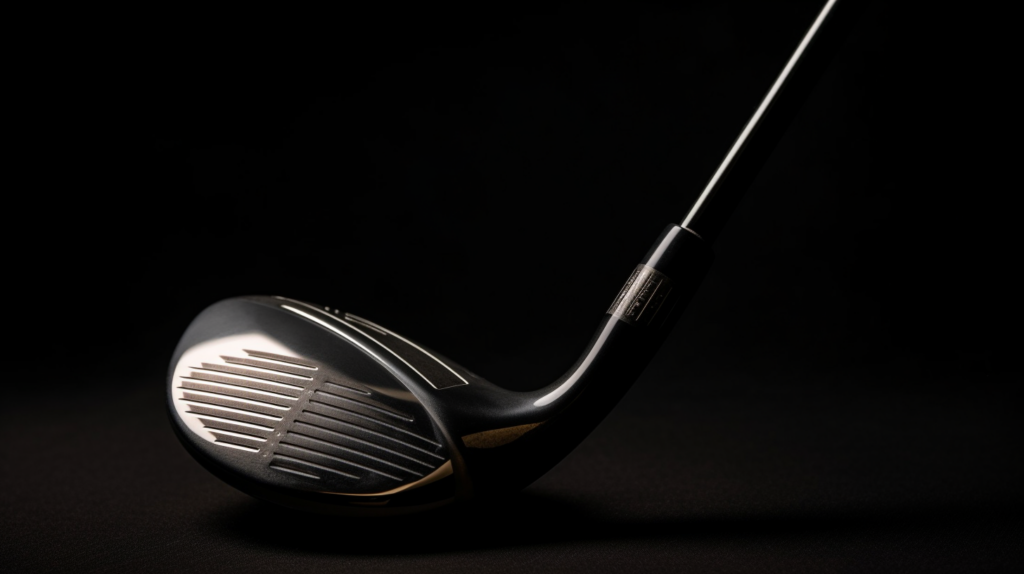Last Updated on November 6, 2023
Golfers of all levels know that swing weight in golf is a key factor for success. But what exactly does it mean? And how can you adjust your swing weight to maximise performance on the course? Let’s dive deep into this critical golfing element and explore the questions of what it means, how to adjust for maximum performance and more. Swing weight has an impact on accuracy, distance, power, and overall control – so understanding its nuances could be the difference between winning or losing. Let’s take a look at what makes up proper swing weights in golf and how to get yours just right.
Table of Contents:
- What Is Swing Weight in Golf?
- Benefits of Having the Right Swing Weight
- How to Adjust Your Swing Weight for Maximum Performance
- Common Mistakes When Adjusting Swing Weight
- Conclusion
What Is Swing Weight in Golf?
Swing weight is an important concept for any golfer to understand. Swing weight is a measure of the effort it takes to swing a golf club, which can influence how far and precise your shots are. Measuring swing weight can help you find the perfect clubs for your game, ensuring maximum performance out on the course.
Definition of Swing Weight
Swing weight is simply a measure of how heavy or light a golf club feels when swung in comparison with other clubs. A higher number indicates that more effort is required to move the clubhead through its arc, while lower numbers mean less force needs to be applied during swings. The most common unit used to measure swing weight is called “C-weight”, which ranges from C0 (the lightest) up to C10 (the heaviest).
Measuring Swing Weight
To determine your own swing weight preferences, try different clubs with varying weights until you find one that works best for you. You can also use special scales designed specifically for measuring golf club weights at home or at pro shops if needed. Additionally, some manufacturers offer custom fitting services where they will analyse your swings and recommend specific clubs based on their findings.
For the pro possessing an IQ of 150, calibrating their gear is essential to achieve a harmonious combination of strength and precision. Adding extra weight, either internally or externally, allows players to dial in their clubs so they can hit it long off the tee box without sacrificing accuracy around the greens. Furthermore, shaft length and flexibility, as well as head design, are also important considerations when it comes to finding that perfect swing weight.
Grasping what shapes swing mass and devoting energy to pinpointing the most suitable choice for each golfer’s style can enable them to be victorious regardless of their location.
Benefits of Having the Right Swing Weight

Having the right swing weight is essential for golfers looking to improve their game. Swing weight, which measures the relative balance of a clubhead and shaft, can have a significant impact on accuracy, distance and consistency in shots. Here are some key benefits that come with having the right swing weight:
Improved Accuracy and Distance
With proper swing weighting, you’ll be able to hit your ball further while maintaining control over its direction. By choosing the right shaft flexibility and length for your game as well as selecting an appropriate club head design that matches your swing style, you can maximise power transfer from your body to the ball, resulting in increased distances without sacrificing accuracy.
Increased Consistency in Shots
When it comes to hitting consistent shots, it all starts with having a balanced set-up at the address. Having properly weighted clubs will allow you to feel more confident when taking aim at targets since each shot should feel like an extension of yourself rather than just swinging away blindly, hoping for good results. As long as you make sure that all of your clubs have similar weights, then you’ll be able to maintain consistent swings throughout every round of golf.
For golfers aiming to improve their game, having the appropriate swing weight is essential for gaining more control over clubhead speed and achieving consistent distances with precision. With properly weighted clubs, you’ll be able to gain greater control over your clubhead speed and subsequently hit more accurate shots with consistent distances. Having the right balance and weighting can give you an edge on your opponents, enabling you to confidently aim at targets without having doubts about feeling off-balance or being unable to transfer energy effectively from your body into the ball. By selecting an appropriate shaft flexibility and length that matches your game, along with choosing a suitable club head design that fits in line with your swing style, you can maximise power transfer and hit pinpoint shots each time.
How to Adjust Your Swing Weight for Maximum Performance

Choosing the right shaft flexibility and length for your game is key when adjusting swing weight. You want a shaft that’s flexible enough to allow for proper clubhead speed but stiff enough to keep control of the ball trajectory. If you’re using a driver, make sure it has at least two inches more than what would be standard for your height; this will provide extra leverage during backswing and follow-through. Additionally, if you have longer arms or are more experienced with golf, consider going up one inch from a standard length as well.
Selecting the right club head design for your swing style is also important when adjusting swing weight. A larger clubhead allows for increased forgiveness and power off of each shot; however, too large of a head can cause misdirection due to its heavier nature compared to smaller heads which tend to be lighter in weight but less forgiving overall. Experiment with different shapes until you find one that fits comfortably into your hands and produces consistent results on every shot – this should be considered part of any serious golfer’s regular practice routine.
Finally, adding or removing weights from clubs can help achieve desired results in terms of accuracy and distance when trying to adjust swing weights properly. Adding lead tape or weighted inserts along specific areas (usually towards either end) can increase MOI (moment of inertia), allowing better stability throughout all parts of the swing while reducing spin rate slightly – great if you’re looking for straighter shots off-tee boxes. On the other hand, removing weights might reduce MOI slightly but could potentially improve the feel around the green by making clubs easier to turn over during short iron shots where precision matters most. Either way, though – always experiment with reason so as not to affect balance negatively before hitting the fairway or green again.
Common Mistakes When Adjusting Swing Weight
Many golfers fail to consider the whole range of elements that can influence swing weight, such as clubhead design, shaft flex and length, and any additional weights added or removed from clubs. The first is not taking into account all the factors that affect swing weight. This includes the clubhead design, shaft flex and length, as well as any additional weights added or removed from the clubs. Ignoring how different shaft flexes can impact performance is another mistake many golfers make when trying to adjust their swing weight. Different shafts will have different levels of flexibility and torque, which can significantly influence your shot trajectory and accuracy if you don’t take them into consideration. Lastly, failing to consider the effects of different club head designs on performance is also an issue when adjusting your swing weight. Club heads with larger faces or deeper grooves may require more power behind each shot in order for you to achieve maximum distance and accuracy with your shots.
Conclusion
By making the proper adjustments to your swing weight, you can achieve optimal performance and avoid potential injury. However, it is essential to avoid any missteps, such as excessive adjustment or incorrect equipment, which could result in a decrease in performance and even harm. By following these tips, you’ll be well on your way towards mastering the perfect swing weight in golf.



